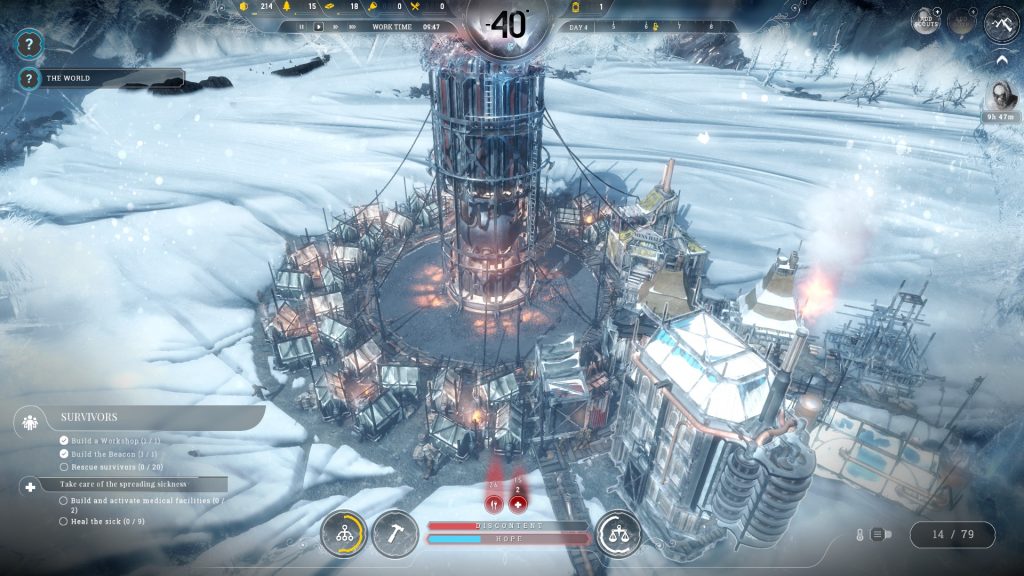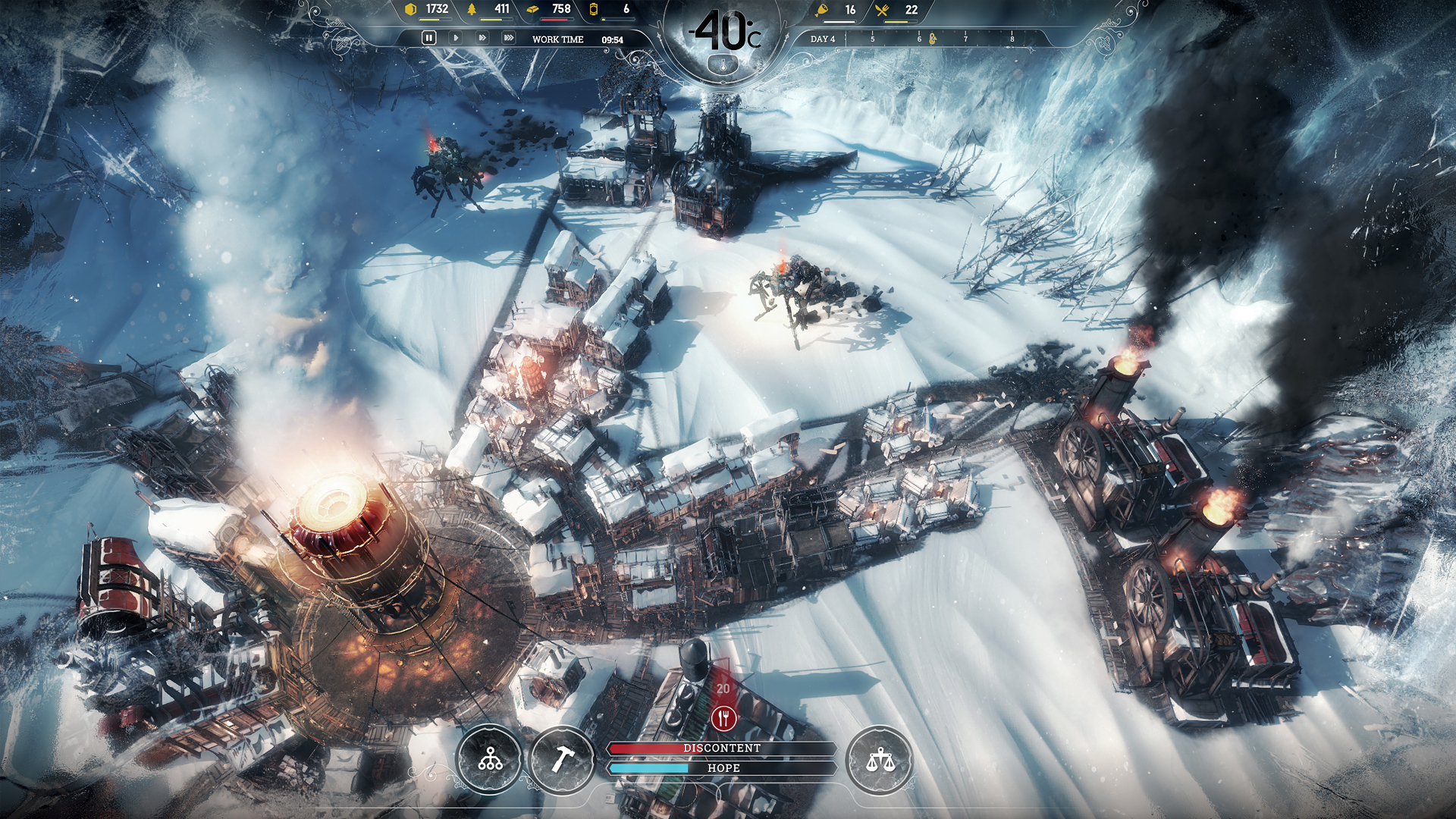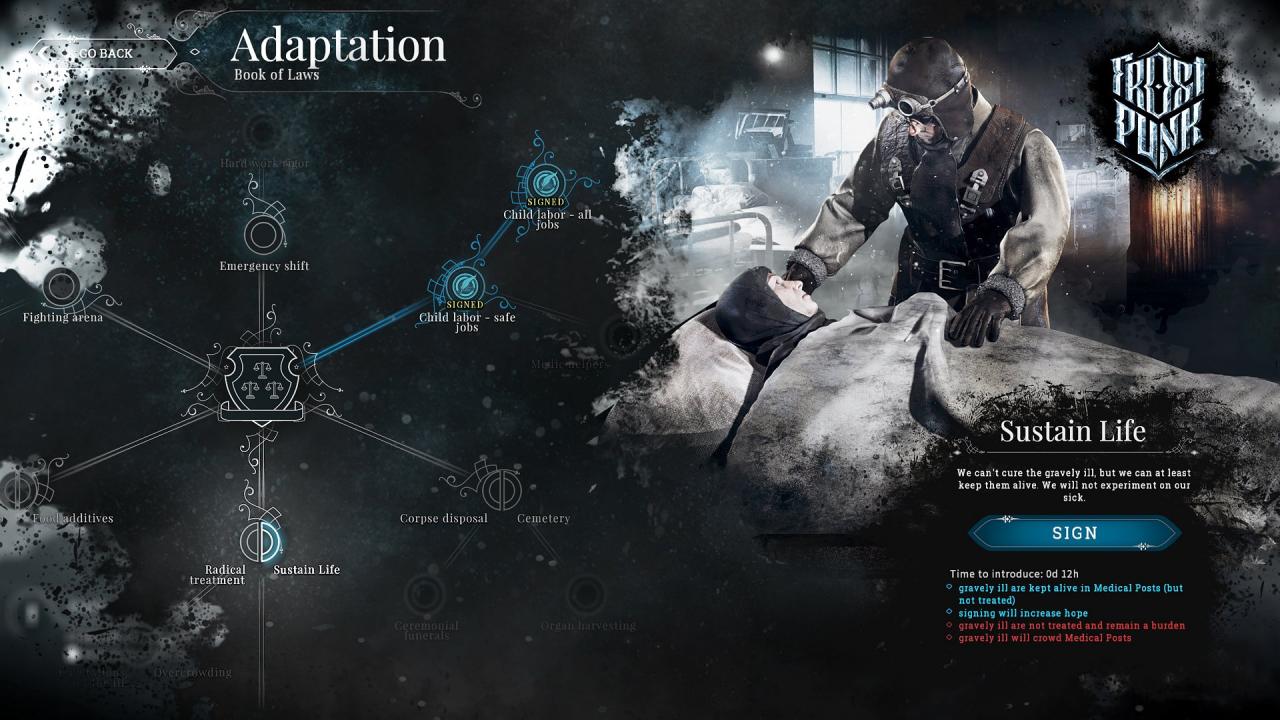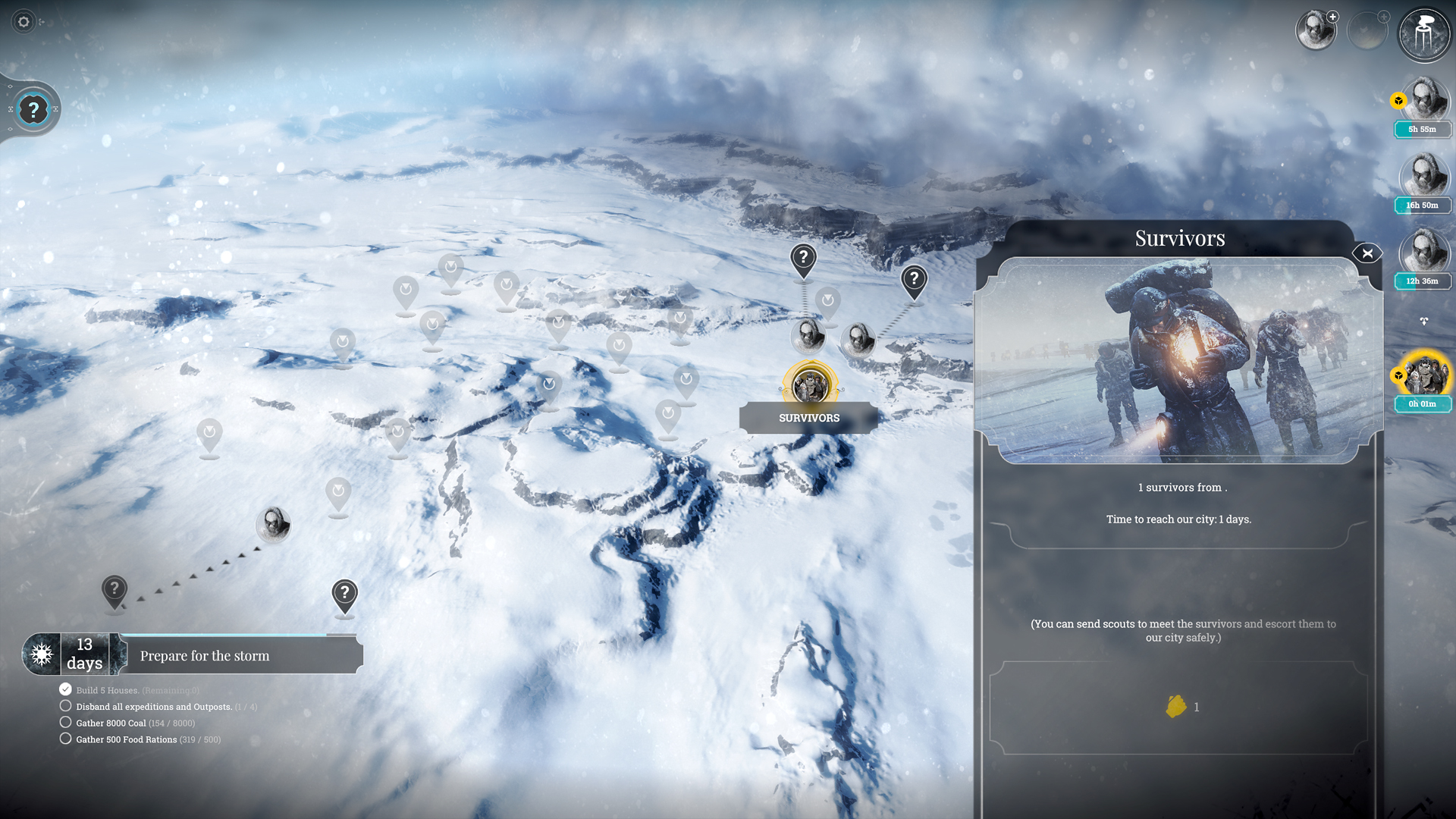Frostpunk is a city building game with a twist – it’s incredibly sad and bleak. It’s essentially Sim City: Death and Despair. And I love it.
Overview
Frostpunk is developed and published by 11 bit studios, the same team behind the Gaming Uncensored favorite This War of Mine.
The premise of the game is that a global ice age has been triggered by volcanic eruptions during the 19th century and you must ensure the survival of your small group of people. Gameplay is centered around a large steam-powered generator that serves as the hub of your city. It provides heat to nearby buildings and power to the city.
There are currently three scenarios, each with its own goals but similar gameplay. The main scenario focuses on the survival of a band of people who fled London but then got separated from their bigger group. The second scenario tasks you with preserving four buildings that contain seeds and plant life that would freeze without human intervention. The third scenario charges you to run a city that is continually receiving groups of refugees, many of whom require medical care or who are children.
Resource management is obviously a central part of the game, but you also have to work around a day/night cycle and ever worsening weather conditions. You also have to maintain hope amongst your people while reducing discontent – either of which will end the game if they reach their maximum negative value.
Resources
Starting out, there are three primary resources: coal, wood, and steel. Coal is used to power your generator, steam hubs (which work as remote heaters), and heaters in buildings. Wood and steel are used to construct new buildings and as the currency for research.
At the beginning of the game, you collect these three resources via scrap piles. Those run out quickly, though, so you need to research and build mines and sawmills to continue gathering resources. You need to continue research to make your resource buildings more efficient, as you’ll need more of everything as your society grows.
Another resource you need is steam cores. But these are not gatherable or manufacturable – you have to find them. This makes researching a beacon and sending out scout groups an early must for the game. Steam cores are used to construct more advanced buildings, such as the infirmary, which can treat gravely ill citizens, or the hothouse, which can grow vegetables. Steam cores are also used for automatons – mechanical workers that can do the same work as 15 workers and work 24 hours a day for a relatively low coal cost.
Human Resources
The most important, and most demanding, resource you have is people. People do work, which you need. People also have demands, which are annoying. They want things like warmth and food and healthcare. Can you imagine?
People are classified into two groups – workers and engineers. Workers can do all the menial jobs, like mining and gathering. Engineers would be better called specialists as they are required for jobs like research and healthcare.
You will quickly put all your people to work and find that there’s more work to do than you have people. There aren’t any children being born in this world, and even if there were, the time scale of the game is only a few months typically, so knocking boots in the tundra isn’t really a viable option to grow your society.
Instead, you’ll rely on either finding survivors on your scouting expeditions or refugees stumbling into your city. There’s a sweet spot between not having enough people to cover the work that needs doing and having a city full of moochers who need to eat and be cared for while not having places to employ them. I eventually lost one game because I took in every survivor I found only to have a city that required so much heating and food that there was no way to support it.
Laws and Research
The two main progression mechanics are laws and research. Laws can be implemented from the very beginning. The first book of laws focuses on adaptation. It forces you into some hard decisions, like whether or not you want to enact child labor or how you want to treat the seriously ill.
I instituted child labor as a necessity when my civilization was freezing because I didn’t have enough warm hands to carry that sweet, sweet coal. But I couldn’t bring myself to make kids do hard labor, so I employed them in my food buildings. Even in virtual space, I still couldn’t handle putting kids in a coal mine. Somehow, though, the kids in the kitchen still got hurt all the time.
Side note – realistically what else should the kids be doing? All the adults are working, so there’s no education or childcare. They might as well earn their keep, right?
Aside from forcing kids to work, you can also choose one of two paths in the second book of laws – Purpose. You can either have a faith-based society, where you build shrines and temples and inspire people to a higher purpose, or you can impose order where you set up prisons and propaganda machines to maintain the peace.
As for research, this is how you improve buildings and unlock new mechanics like exploration and the automatons. Research requires building a workshop, which should be done as quickly as possible. There are multiple tiers of research in four different categories, all of which are pretty self-explanatory. The first thing you should research is the beacon, which allows you to send out scout teams. From there, I found the hothouse and the coal mine as essential research items.
Exploration
Once you research the beacon, you can send groups of five people out to explore the wilderness around your city. They will find abandoned cities, vacant mines, and the rare pack of survivors.
Exploration is critical to bringing in two otherwise difficult to obtain resources – people and steam cores. Often times the people you find are sick or hungry. They will need homes when they arrive in your city. But they also provide labor. However, your city can become overpopulated, at which point you must make the difficult decision of either bringing them back to your city or leaving them to their fate in the cold.
Steam cores are critical for mid- to end-game buildings. The only way you get them is by finding them while exploring, so setting up multiple scout teams is essential. But beware, those scout teams can die, so it’s a good idea to send them back to base to drop off their resources on a regular basis.
Emotion and Narrative
Like This War of Mine, Frostpunk is based on a bleak worldview where mere survival, however sad and broken it may be, is the “good” ending. But unlike its spiritual predecessor, Frostpunk doesn’t deliver the emotional depth that 11 bit studios have proven they can convey.
Most of this is due to the type of game. This War of Mine is incredibly personal as the game is focused on just a few characters at a time. You get to know their stories, their losses, their pains, their needs. You empathize with them. You ache when you can’t feed them or when one of them dies.
Frostpunk simply can’t deliver that same emotional depth. In the main campaign mode, you start with 80 people. Sure, they have names and you can click on them to see some personal details. And when one gets sick or needs an amputation, you can see their name again and… well really that’s about it.
To be fair, the game does have its own dark emotional depth. The aforementioned child labor or forcing your people to work extra hours when resources low makes you think and feel. But when my first citizen died, my first thought was “I wonder what we do with the body.”
The campaign naratives do a good job of making you care a little more. I particularly liked the Ark scenario. I cared about preserving the plant life, and it had an optional rescue mission for a failing settlement so that you can care about people, too, if you so choose.
But a sim builder just isn’t capable of the same depth of emotions that other types of games are. I feel Frostpunk does as good of a job as possible for the format. And the rest of the gameplay makes it worth it the time.









Leave a Reply